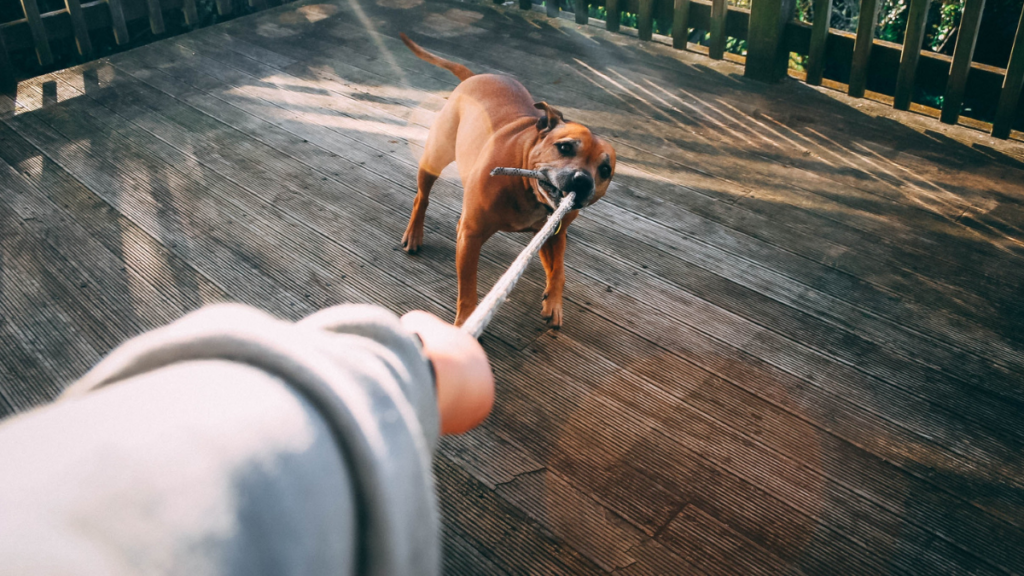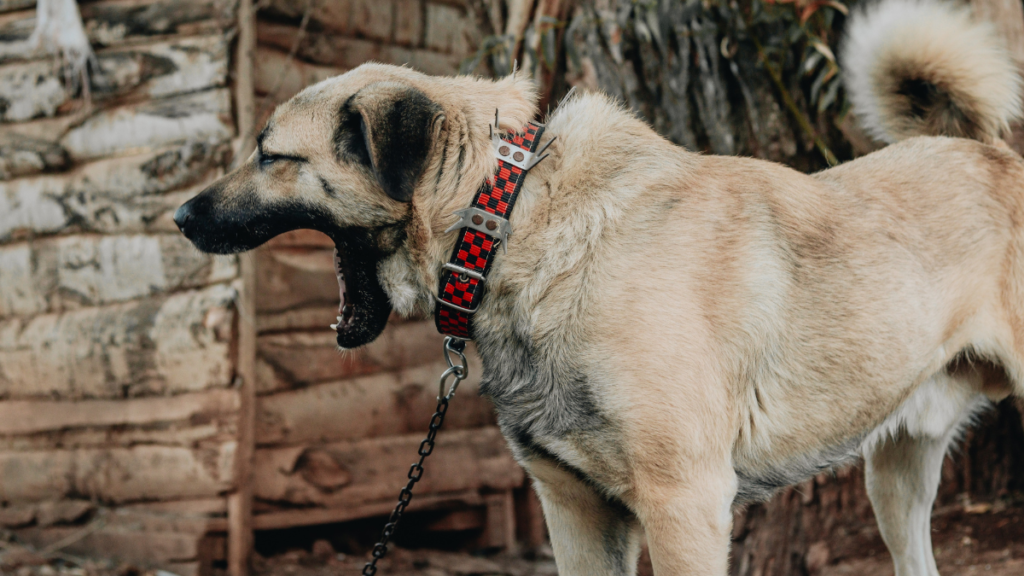Even though dogs are renowned for their loyalty, affection, and playful nature, they can also act in ways that baffle or concern their owners. Displacement behavior is a behavior that dogs exhibit when they are stressed or uncomfortable. A dog’s displacement behavior serves as a coping mechanism to combat conflicting emotions or circumstances. There are many ways it can appear, such as excessive licking, yawning, scratching, or biting. Understanding displacement behavior is crucial for dog guardians, as it allows them to identify when their beloved companion is experiencing it. With this understanding, owners are able to provide comfort to their pets, reduce their stress, and ensure their well-being. The purpose of this article is to explore the concept of displacement behavior, how to recognize and treat it in your dog, and the reasons behind its occurrence.
What is Displacement Behavior in Dogs?
Dogs engage in displacement behavior when they experience stress or internal conflict. These behaviors are often used by dogs to relieve or manage internal turmoil. Observe, for example, if a dog scratches excessively or yawns frequently, seemingly unrelated to its surroundings. A dog’s coping mechanisms help him navigate conflicting emotions.
One common trigger for displacement behaviors in dogs is situations that elicit mixed emotions. As a result of the tension between curiosity and caution, a dog may show displacement behavior when meeting an unfamiliar but friendly person.
It has been recognized that certain stimuli can induce displacement behaviors in dogs. Among these stimuli are social interactions, environmental changes, competition, and resource protection scenarios. In order to prevent displacement behaviors, dog owners need to recognize these triggers.
Signs That Your Dog is in Distress
Dogs engage in displacement behavior when they experience stress or internal conflict. These behaviors are often used by dogs to relieve or manage internal turmoil. Observe, for example, if a dog scratches excessively or yawns frequently, seemingly unrelated to its surroundings
Recommended: Understanding Canine Behavior Changes Following Vaccination
A dog’s coping mechanisms help him navigate conflicting emotions. One common trigger for displacement behaviors in dogs is situations that elicit mixed emotions. As a result of the tension between curiosity and caution, a dog may show displacement behavior when meeting an unfamiliar but friendly person.
It has been recognized that certain stimuli can induce displacement behaviors in dogs. Among these stimuli are social interactions, environmental changes, competition, and resource protection scenarios. In order to prevent displacement behaviors, dog owners need to recognize these triggers.
Common Displacement Behavior in Dogs

Common displacement behaviors in Dogs include:
- Biting the lead
- Scratching
- Mouthing (mouthing people’s hands, legs, or clothing)
- Mounting/humping
- Picking up things to rag
- Chewing
- Rolling on the ground
- Licking or chewing body parts
- Dog checking their urogenital area
- Hyped-up running/zooming around
- Hyperactivity
- Scratching the ground with back legs
- Sniffing the ground
- Shake off
- Lip lick
- Yawn
Examples of Displacement Behavior in Dogs
Let’s look at some real-life scenarios where dogs display displacement behavior. Imagine a dog in a busy park, surrounded by numerous unfamiliar dogs. A dog in such a situation may excessively scratch or yawn to manage the conflicting emotions.
Another scenario involves a dog that encounters a newborn. As a result of curiosity and uncertainty, the dog may exhibit displacement behaviors like sniffing the ground or excessively licking its paws. The root cause of displacement behaviors can be identified by examining these situations and providing more effective support to our dogs.
How to Deal With Displacement Behaviors in Dogs
First, it is essential to identify why your dog is exhibiting these behaviors. By doing so, you can prevent them from experiencing those situations until they are more confident to face them. Whenever you train your dog on a behavior, break it down into smaller, achievable steps that can be rewarded in order to minimize mistakes.
When your dog displays displacement behaviors, don’t punish them because it will only increase their anxiety. It is important to remember that these behaviors are a result of feelings of unease and uncertainty. It’s possible that your dog uses these behaviors to determine what to do next.
If your dog resorts to displacement behavior rather than aggressive biting, it’s not a behavior you want to discourage. Otherwise, they may go straight to biting without going through this intermediary step.
However, it would be beneficial if you did not reinforce these behaviors too much because you do not want your dog to repeat them and create habits out of them. The goal is to manage the situation and then actively work on changing your dog’s emotional response to the trigger or situation. This ultimately benefits everyone involved and creates a positive outcome.
Exercises for Training a Dog’s Impulse Control and Frustration Tolerance
An important skill for dogs is the ability to control their impulses and tolerate frustration. The ability to manage emotions and react appropriately is one of these abilities. To enhance your dog’s impulse control and frustration tolerance, try these eight practical training exercises:
- “Wait” Command: Instruct your dog to patiently wait before passing through doorways or receiving their meals.
- “Leave it” Command: Train your dog to resist the urge to grab objects or treats from the ground.
- “Stay” Command: Teach your dog to remain in a specific position until you provide a release cue.
- “Drop it” Command: Encourage your dog to let go of items when instructed, preventing possessive behaviors.
- “Focus” Command: Instruct your dog to maintain eye contact with you, even in distracting surroundings.
- Gradually Increase Difficulty: Gradually introduce more distractions or challenges in your training exercises.
- Desensitization and Counter-Conditioning: Expose your dog to triggers in a controlled manner and reward calm behavior.
- Puzzle Toys and Interactive Feeding: Offer mental stimulation and teach delayed gratification through interactive toys and puzzle feeders.
The act of training your dog to control his impulses and tolerate frustration improves his behavior and strengthens the bond between you and him.
Final Thoughts
In dogs, displacement behavior is a coping mechanism that comes up when they encounter stress or internal conflict. Dogs use these behaviors to manage their emotional turmoil, such as scratching excessively, yawning, or biting. Social interactions, environmental changes, and competition/resource protection scenarios can be stressors for dogs. To effectively address displacement behaviors, dog owners must identify these triggers.
It is crucial to recognize signs of distress in your dog, as unusual behavior can indicate internal conflict or anxiety. Biting the lead, scratching, mouthing, or chewing are common displacement behaviors. Rather than punishing these behaviors, you should work on changing your dog’s emotional response to triggers. Dogs can manage their emotions and react appropriately by practicing impulse control and frustration tolerance exercises.
In challenging situations, dog owners can provide better support and ensure their pets’ well-being by understanding displacement behavior and employing appropriate training techniques. By understanding their dog’s needs, they can offer comfort and reduce its stress.


Pingback: How to Address Australian Cattle Dog Behavior Issues - Dogy Wogy
Pingback: Why Your Dog Howls in Sleep: A Deeper Understanding - Dogy Wogy
Pingback: How Male Dog Behave When Female Dog is Pregnant - Dogy Wogy